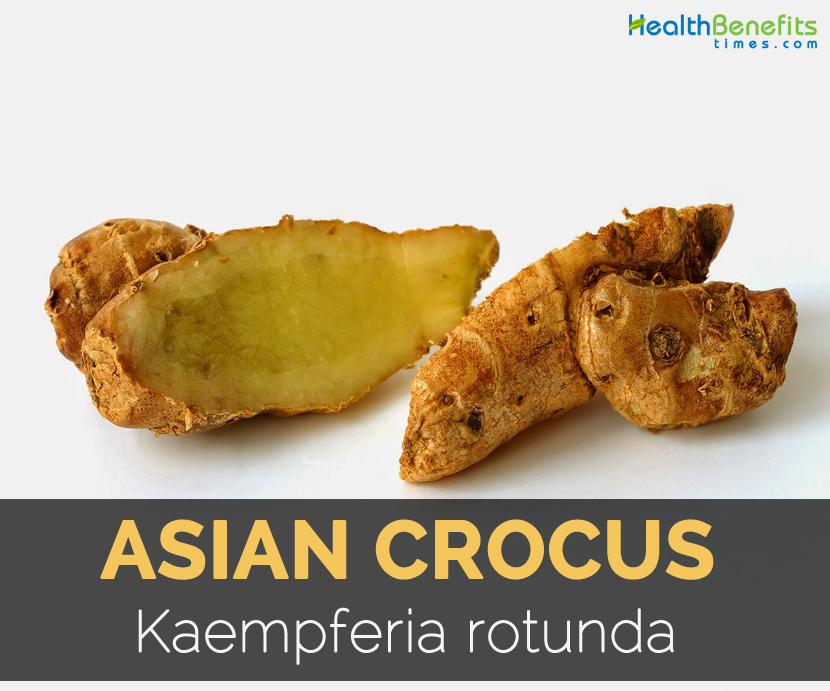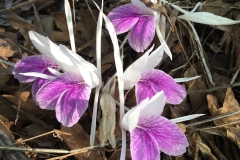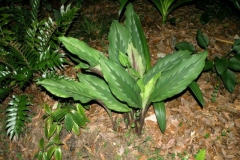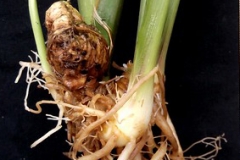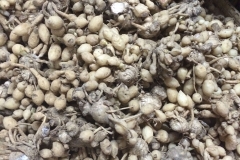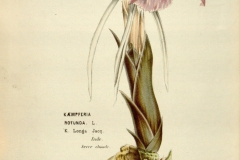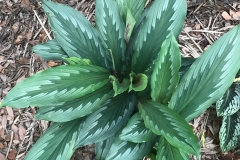| Asian Crocus Quick Facts |
| Name: |
Asian Crocus |
| Scientific Name: |
Kaempferia rotunda |
| Origin |
China (Guangdong, Guangxi, Hainan, Taiwan, Yunnan), the Indian subcontinent (including Assam, Nepal and Bangladesh), Indochina |
| Colors |
Yellowish-white |
| Shapes |
Subglobose, ovate or spindle-shape, about 1.15 cm long |
Asian Crocus, Kaempferia rotunda, belongs to family Zingiberaceae which is cultivated for the tubers which is used for wounds, swellings and tumors. It is inherent to Indian subcontinent through Southeast Asia to Southern China. It is sophisticated in China, India, Taiwan, Malaysia, Indonesia, Sri Lanka, Myanmar, Thailand and Vietnam. It is naturalized in Java, Costa Rica and Malaysia.
It is an aromatic herb with tuberous rhizome with gragrant subglobose yellow to white tuberous rhizome which is known as Chengazhineerkkizhangu in traditional medicine of Kerala. It is distributed throughout India from eastern Himalaya to Sri Lanka and the Malay Peninsula to Malay Island. Roots and rhizomes are used for abdominal pain, obesity, dysentery and diarrhea. Locally, it is applied to tumors, stirring.
Plant description
Kaempferia rotunda is a small rhizomatous and stemless herb that grows to the height of 65 cm with fleshy, shot and robust subterranean rhizomes which bears slender and cylindrical roots. Tubers are swollen, ovate or spindle shape, subglobose and yellowishwhite tubers about 1.15 cm long and 1.2.5 cm thick. Leaves are erect, distichous and about 7-25 cm long. Lamina is oblong lancolate to elliptical about 7–36 cm long by 4-7- 11 cm wide. Inflorescence forms on separate shoot from rhizome before leaves with 4 to 6 flowers, purple to brown bracts. Calyx splits on one side, about 4 to 7 cm with 3-toothed white or greenish apex and a corolla tube equal to calyx. Lobes are white, spreading, linear and about 5 cm. Lobes are down-curved about 3.5 × 2 cm. Ovary is hairy and about 4 to 6 mm.
Traditional uses
- In Bangladesh, it is used in folk medicine to treat pain and high blood sugar.
- It is used in wounds, abdominal pain, colic disorder and diarrhea.
- In Java, rhizome is used as a cooling medicine and for stomach ailments.
- In India, leaves are used as a poultice.
- Rhizomes are used in Philippines for gastric disorders or used externally with coconut oil.
- In India, rhizomes are used to treat mumps, bruises and wounds.
- Use the rhizome juice internally.
- In Nepal, the rhizome paste is mixed with other herbs and applied to sprains covered with bandage.
- Apply the tubers to swellings, tumors and wounds.
- It evacuates blood clots as well as other impurities from the body, cures burning sensation, insomnia, mental disorders and improves complexion.
- It is also helpful for gastric complaints. It eliminates blood clots and impurities from the body.
- Use the rhizome juice for dropsical affections of feet, hands and effusions in joints.
Culinary uses
- Rhizomes, leaves, roots and shoots are consumed fresh or also cooked as vegetables.
- In Southeast Asia, it is used as a flavoring spice. Young leaves are consumed as sayor or lalap.
- Young leaves and rhizomes are used to flavor food.
- For cough, take 3 grams of dried tuber powder.
- Put 1 drop of tuber oil in each nostril for nose diseases.
- To treat indigestion, drink 2 ml decoction of tuber once a day.
- Take 4 grams of tuber powder for piles twice a day.
- For skin problems, apply tuber decoction to the infected skin or consume 2 ml of it once in a day.
- For jaundice, boil 50 grams of Asian Crocus tuber in 500 ml of water till it is reduced to half. Drink 4 ml twice a day.
- Put the warm leaves of Asian Crocus over the wounds to support healing.
- As an anti-aging, consume 2 grams of crushed dried flowers of Asian Crocus with 1 tsp. of honey. Take it twice a day.
- As an antidote, consume 5 ml of rhizomes juice once a day.
- For anorexia, orally intake rhizome powder to promote appetite.
Precautions
- Consult the health practitioner for treating health problems.
- If experienced any allergic reactions, discontinue use and seek for medical attention immediately.
References:
https://www.itis.gov/servlet/SingleRpt/SingleRpt?search_topic=TSN&search_value=42399#null
https://en.wikipedia.org/wiki/Kaempferia_rotunda
https://www.researchgate.net/publication/261925516_Safety_Assessment_of_Tuberous_Rhizome_of_Kaempferia_rotunda_L_By_Acute_and_28-days_Repeated_Dose_Toxicity_Studies
https://shodhganga.inflibnet.ac.in/bitstream/10603/150383/9/09_chapter_02.pdf
http://tropical.theferns.info/viewtropical.php?id=Kaempferia+rotunda
https://plants.usda.gov/core/profile?symbol=KARO2
https://www.amazon.in/BABYLON-Kaempferia-Rotunda-Rhizomes-Bulbs/dp/B078S1SXD9
https://herbpathy.com/Uses-and-Benefits-of-Kaempferia-Rotunda-Cid1155
Comments
comments


